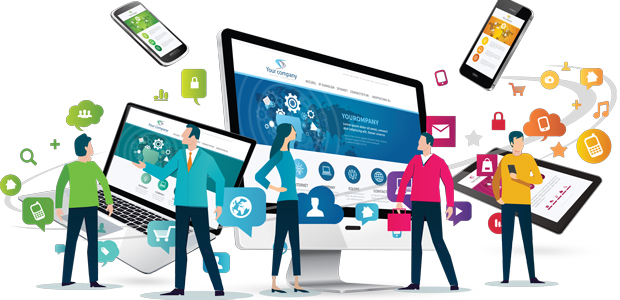
Setting up your technology - Getting it right first time
In the second part of this business mix article series we see Brash Solutions Limited focus on technology. But not the sexy tech of product development, more the ‘behind the scenes tech’ that keeps you operating and secure – a real fundamental backbone to the operations of every business, regardless of size.
Technology is interwoven into the fabric of every modern business; however, it is not easy to get right first time. Many companies struggle in the initial startup phase or accelerated growth period to choose the most suitable tech for their business.
Long gone are the days when a business had a simple choice of relatively few technology providers, platforms, software systems and hardware. The Internet is now full of multiple solution providers, software system comparison sites and opinion on which technology stack is most suitable and most desirable for small business.
The truth is, with so many options available, a decision should be made very early on with a strategic approach taken and regularly reviewed. As a small business or startup, such decisions can be made with less consideration to large user numbers and organisation culture but are more often guided by cost considerations and ease of adoption and setup.
Most small businesses and startups are looking for flexibility and ease of integration in both software and hardware. The good news is that with the establishment of cloud computing over the last 10 years and the provision of Software as a Service, capital costs can be kept to a sensible level and the majority of IT expense can be considered more as variable rather than fixed costs. The idea of a startup or small business having to invest many thousands of pounds to purchase a server and infrastructure is long outdated.
So, what should be considered?
Firstly, consider your IT in its entirety; a full ecosystem upon which you will run your business. for example, consider whether desktops, laptops or handheld mobile devices will be used by staff. Often this will be answered by whether your staff will be working from multi-locations or will always be working at a single office desk space.
There may be certain hardware requirements that are specific to your business, for example, high-end graphic design will need a certain minimum specification to run powerful graphics software.
General office software application requirements will usually lead to a simple choice between Google Suite and Microsoft 365. Again, there are alternatives but if you’re looking for a long-term strategic decision it’s unlikely you would defer from one of these. Both Microsoft 365 and Google Suite come with their own cloud file storage systems, collaboration tools and application integration that has massively improved and is still advancing at a rapid pace.
Microsoft 365 Teams collaboration is now becoming the go-to workforce collaboration application especially in the current period of a distributed workforce. There are lots of guides and demonstration video tutorials online and these are certainly worth checking out
Your accounting/book-keeping software decision will often be guided by your accountant, however once again it’s important to get the right product and for small businesses, Software as a Service from providers like Xero or QuickBooks ticks all the boxes.
A particular business type/niche/sector will require specific types of software, for example, businesses in the retail sector will need to consider a point of sale (EPOS) system, a training business is likely to need live-chat and a live demo/training software platform and manufacturing businesses are likely to need some form of Enterprise Resource Planning (ERP) software.
One common mistake is to leave the next consideration to the end of the decision-making process; however, we would recommend it should be considered the number one priority… SECURITY. How you secure your company data, your emails, passwords, remote access, mobile phone usage and systems access are of paramount importance and if you are not getting this aspect of your IT systems right at the beginning it can cause financial and reputational damage at exactly the time you need to be concentrating on growing your business.
The following checklist may help you get your IT right the first time:
- Register your web domain (and similar domains, like .uk)
- Decide on most suitable hardware devices
- Create and host your website
- Secure your website with an SSL certificate
- Decide on the most suitable office applications suite
- Install antivirus on all devices
- Insure 3-2-1 back up policy is in place
- Investigate and trial CRM/job management/marketing/bookkeeping software
- Install VoIP telephone system
It is important to consider as many of these factors as possible to help you get your IT right first time however, one important piece of advice remains: if you feel the software is not right or the decision you have made is not working and affecting your business productivity, be quick to change it. It will always cost more running software and hardware that is reducing productivity and staff morale due to being unfit for purpose or out of date than upgrading or migrating to the right tech for your business.
The most common quotes we hear from clients following an upgrade or migration is “I wish we had done this a long time ago!"


